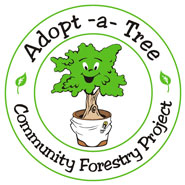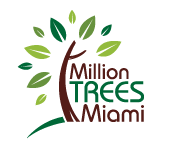Pollinators in General
More than Honeybees and Monarchs, All Pollinators Face Challenges Worldwide. What do pollinators do for us? They feed us! They pollinate the healthy fruits, vegetables and nuts we eat and need to thrive.
Plants, Habitat, Clean Water Resources and Knowledge are some of the key elements involved in preserving pollinators and to help bring some back from the brink of extinction. And while there are many incredible resources available to explore and learn more, perhaps the single most important element is to know what to plant in your area to support local pollinators and this information will change from one geographic location to another.
We created this blog to share plant knowledge, what are the larval host plants for our local butterflies and moth, what are the best nectar resources for all of our local pollinators. This information is from many sources, all tasked with the same mission to save pollinators. And all keyed to our local climate/environmental conditions. Plants support Butterflies and Pollinators but not just any flowering plant will do.
While some species of butterflies (and many moths) are polyphagous (having many host plants) most will only use 2 or 3 often closely related host plants. Often a butterfly will have a preferred host plant and losing the habitat for a host plant can mean losing the butterfly.
Basics
Learn more about what you need to consider when starting Butterfly Gardens on our UF/IFAS Gardening Solutions Website.
Butterfly Gardens Butterfly Gardens – Gardening Solutions – University of Florida, Institute of Food and Agricultural Sciences (ufl.edu)
Gardening with Wildlife Design: Gardening with Wildlife – Gardening Solutions – University of Florida, Institute of Food and Agricultural Sciences (ufl.edu)
Butterfly, Moth & Insect Information-Get to know your local butterflies here
 The Miami Blue Chapter of the North American Butterfly Association (NABA) is named after one of our rarest endangered butterflies.http://miamiblue.org/
The Miami Blue Chapter of the North American Butterfly Association (NABA) is named after one of our rarest endangered butterflies.http://miamiblue.org/
North American Butterfly Association (NABA) has chapters throughout the entire United States. We currently have 6 chapters in the state of Florida Butterfly Club Local Chapters – North American Butterfly Association (naba.org)
Visit these pages and focus on a list of butterflies you wish to provide for.
Butterfly Host Plants for S.E. Florida http://miamiblue.org/plantlist/
Rare or Endangered Butterflies http://miamiblue.org/rare-or-endangered-butterflies/
Butterfly Check List Checklist2020.pdf (miamiblue.org)
 UF/IFAS has publications on 38 butterfly species on our Electronic Data Information System (EDIS) website. And even more information on moths, butterflies and lesser-known pollinators, beneficial insects, all insect critters found in Florida, good, bad, or just plain fascinating (!) on the Department of Entomology’s website, Featured Creatures! Note butterflies are Phylum Arthropoda: Class Insecta: Order: Lepidoptera.
UF/IFAS has publications on 38 butterfly species on our Electronic Data Information System (EDIS) website. And even more information on moths, butterflies and lesser-known pollinators, beneficial insects, all insect critters found in Florida, good, bad, or just plain fascinating (!) on the Department of Entomology’s website, Featured Creatures! Note butterflies are Phylum Arthropoda: Class Insecta: Order: Lepidoptera.
These information sources show photos of eggs, caterpillars, adult insects, larval hosts plants and note flight season information. Not all butterflies are actively reproducing throughout the year and pay attention to range information, not all are found here in South Florida.
https://edis.ifas.ufl.edu/topic_butterflies
https://entnemdept.ifas.ufl.edu/creatures/main/search_higher_insects.htm#L
Prepare to spend some time on this website, it is full of information, activities, and research!
McGuire Center for Lepidoptera & Biodiversity https://www.floridamuseum.ufl.edu/index.php/mcguire/home/
The Daniels Lab at the McGuire Center for Lepidoptera and Biodiversity
https://www.floridamuseum.ufl.edu/daniels-lab/
Butterfly Rain Forest Butterfly Rainforest – Exhibits (ufl.edu)
Butterfly Rain Forest Live Web Cam Canopy Cam – Exhibits (ufl.edu)
Butterfly Rain Forest Rearing Lab-Time Lapsed Video https://youtu.be/2o9xxj5CHig
Monarch Metamorphosis https://youtu.be/o-5es2gjfvU
Life on Earth Life on Earth – Discover Natural History (ufl.edu)
- 3D Augmented Reality Butterfly Cards Highlighting common and rare Florida butterflies, this set of cards features augmented reality bringing each species to life. Download the free Libraries of Life app from any mobile device to view additional content.
- Butterfly Brochures Download colorful brochures covering flowering plants, wildflowers, native insect pollinators, butterflies, larvae, host plants and more.
- Butterflies & Moths Image Gallery Collection of butterfly, moth and caterpillar images from around the world.
- Butterfly Rainforest Exhibit Identification Guide This guide, organized by color, contains photographs of the more than 150 Lepidoptera species displayed in the Florida Museum’s Butterfly Rainforest exhibit since it opened in 2004.
- Florida’s Wildflowers & Butterflies Information about the 50 most common native wildflowers and butterflies in Florida.
- Frequently Asked Questions These are the most frequently asked questions about butterflies and moths – we’ve got your butterfly basics covered!
- Butterfly Rainforest Live Critter Cams Choose Canopy Cam or Chrysalis Cam to watch our butterflies live.
- Moths of North Central Florida Reference images from a survey of moth fauna of Paynes Prairie outside of Gainesville, Florida.
Indoor Butterfly Exhibits Indoor Butterfly Exhibits – Exhibits (ufl.edu)
Butterflies of the Rainforest Exhibit ID Butterflies of the Rainforest Exhibit ID Guide – Exhibits (ufl.edu) Note: Many of the butterflies in the Rain Forest Exhibit are
Kawahara Lab https://www.floridamuseum.ufl.edu/kawahara-lab/
How to help reverse insect declines. https://www.floridamuseum.ufl.edu/science/how-to-help-reverse-insect-declines/
The Insect Effect: Insect Decline and the Future of Our Planet https://youtu.be/WhSgzInOHIY
Grants help Miami blue butterfly conservation efforts Grants help Miami blue butterfly conservation efforts – Florida Museum Science (ufl.edu)
Educator Guides https://www.floridamuseum.ufl.edu/educators/resources/
Butterfly Plants
“The fates of pollinators and their host plants are intertwined. For many native pollinators, the plants they rely on face their own threats.” The Nature Conservancy https://www.nature.org/en-us/magazine/magazine-articles/planting-for-pollinators/
Online resource of over 2500 plants found in 10 South Florida Counties.
Natives for your Neighborhood https://www.regionalconservation.org/beta/nfyn/default.asp
“A Resource to Help Change a Backyard Hobby for a Few into a Powerful Conservation Tool for Many.
Here you can learn how to turn simple gardening into habitat restoration by using plants that are native to your specific area. This website will provide you with the information you need to do that. By planting native plants and recreating natural habitats that are unique to your area, you will make a valuable contribution to the conservation and restoration of South Florida’s natural heritage!”
“The Florida Native Plant Society (FNPS) is a non-profit organization formed in 1980 to promote the preservation, conservation, and restoration of the native plants and native plant communities of Florida. The Dade Chapter of the Florida Native Plant Society (DCFNPS) is one of 37 chapters around the state and includes residents of the Florida Keys.”
Link here to explore native plants and consider joining this group. When monthly meetings can safely resume, they hold a plant raffle at each meeting. This is a wonderful way to acquire difficult to find native plants, i.e. plants grown by enthusiasts. Their yearly Native Plant Day was cancelled in 2020 and 2021. This event features exhibits, presentations, information, artwork, and native plants to purchase from local growers.
Once you know what native plants you would like to add to your garden, where do you purchase them? Link to this page and you can also download a pdf and more information from this link. Some nurseries/growers have special dates when they are open to the public.
https://dade.fnpschapters.org/newsletters/articles/
https://dade.fnpschapters.org/nativeplants/nativeplants/obtainnatives/
 “Fairchild’s Connect to Protect Network is a citizen science program that enlists South Florida residents to plant native plants in order to connect the few remaining isolated fragments of pine rockland— our globally critically imperiled ecosystem. Installing native plants increases the probability that bees, butterflies, and birds can find and transport seeds and pollen across developed areas that separate pine rockland fragments, improving gene flow and the prospects for survival of our region’s unique native plant heritage. The program is run by the Garden’s Conservation Team.”
“Fairchild’s Connect to Protect Network is a citizen science program that enlists South Florida residents to plant native plants in order to connect the few remaining isolated fragments of pine rockland— our globally critically imperiled ecosystem. Installing native plants increases the probability that bees, butterflies, and birds can find and transport seeds and pollen across developed areas that separate pine rockland fragments, improving gene flow and the prospects for survival of our region’s unique native plant heritage. The program is run by the Garden’s Conservation Team.”
Joining Connect to Protect is easy. They only require that you are located in Miami-Dade or Monroe County, have an email address, and can maintain pesticide-free pine rockland plants on your property for at least two years. To join, simply email your name, address, and telephone number to ConnectToProtect@fairchildgarden.org. Schools and businesses, can provide the name of their institution and the names and email addresses of two additional coworkers who support joining the network. If you still have questions about membership? Check out Membership FAQs”. https://fairchildgarden.org/wp-content/uploads/2020/11/CTPN-FAQ.pdf
A Word About Trees!

 You may be surprised to learn many larval host plants for butterflies are trees! We are working on a pdf to share with everyone that features the trees that are larval host. In the meantime, we have shared this with Million Trees Miami, Adopt-a-Tree and our partners at Miami Dade County Parks, Recreation and Open Spaces. Look for these events and more once we are clear of Covid-19 and the restrictions in place to keep us safe and note smaller events with a limited number of volunteers may already be taking place.
You may be surprised to learn many larval host plants for butterflies are trees! We are working on a pdf to share with everyone that features the trees that are larval host. In the meantime, we have shared this with Million Trees Miami, Adopt-a-Tree and our partners at Miami Dade County Parks, Recreation and Open Spaces. Look for these events and more once we are clear of Covid-19 and the restrictions in place to keep us safe and note smaller events with a limited number of volunteers may already be taking place.
Getting Started. Rainy Season is the best time to plant. Our South Florida rainy season normally starts in late May.
Gather your list of plants and the all information you need to grow each from the Institute of Regional Conservation website and use the nine principles of Florida-Friendly LandscapingTM. Start with Right Plant, Right Place to insure you locate the best site within your landscape, group plants with similar needs, allow space for plants to mature and more and follow all nine principles to create a beautiful, sustainable, landscape, pollinator friendly landscape.
Florida-Friendly LandscapingTM and the Florida Yards & Neighborhoods program (from which FFL evolved from) were both created to guide all involved in our landscapes to create landscapes that conserve and protect all our water resources (Biscayne Aquifer, Biscayne Bay, Canal Systems, Lakes, Ponds and Rivers), man-made and natural. All Water. Planting for pollinators is an intensive use of Right Plant, Right Place considerations. Saving pollinators can save and protect our water resources. There are collateral benefits!
Are you getting the idea that it takes a village to provide for pollinators and you are the Village! You can contact me by email with any questions. And…..you can also view the presentation on Best Pollinator Plants for Miami Dade County on our YouTube Channel. More to come!
Happy Gardening!
 0
0




